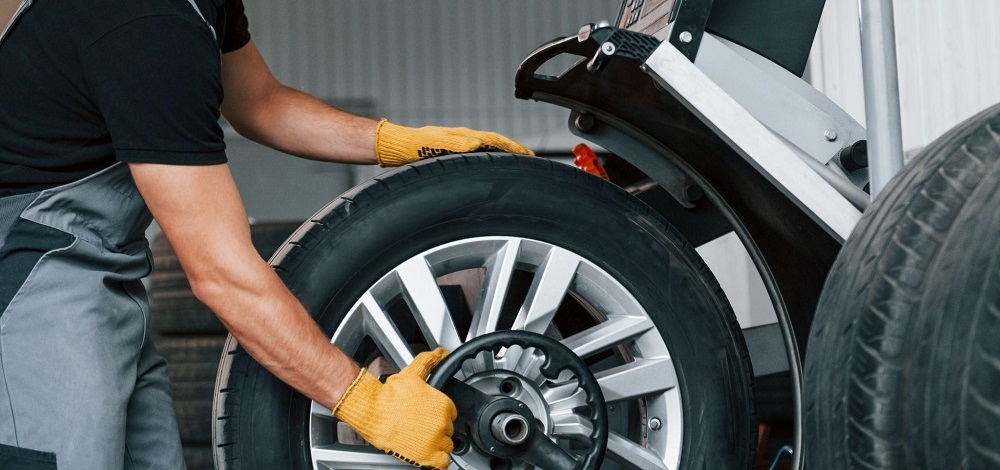Maintain Rolling Properly: GMC Tires Service by Morris Tires
Maintain Rolling Properly: GMC Tires Service by Morris Tires
Blog Article
Tire Service: The Effect of Climate Condition
When it pertains to guaranteeing optimum efficiency and safety when driving, recognizing the effect of weather problems on tire service is critical. From scorching warmth to icy roads, each weather condition component can considerably influence tire capability and general driving experience. By diving into the effects of differing weather on tires, drivers can acquire beneficial understandings that might enhance their car's efficiency and long life. In this discussion, we will check out the detailed partnership between climate condition and tire solution, losing light on the relevance of weather-specific tire upkeep techniques and considerations.
Heat and Tire Efficiency
When subjected to heats, tires experience modifications in efficiency that can considerably influence vehicle safety and security and handling. The heat produced from prolonged driving or heat problems causes the tire rubber to soften, causing minimized walk life and boosted wear. As the rubber becomes softer, the tire's grip when driving diminishes, affecting stopping distances and total grip. In severe cases, too much heat can even cause tire blowouts, posing an extreme security danger to the vehicle and its owners.

Winter Results
Winter conditions can have a considerable influence on tire performance and safety and security. As temperature levels decrease, tire rubber can set, resulting in decreased traction on icy or snow-covered roads. In chilly climate, tires might also lose atmospheric pressure much more rapidly, which can affect managing and fuel performance. Furthermore, chilly temperatures can cause tire sidewalls to stiffen, enhancing the danger of damages from gaps or various other road threats.
To mitigate the results of cold climate on tires, it is vital to consistently examine tire stress and inflate them to the maker's recommended degrees. Using winter months or all-season tires designed for winter conditions can also improve traction and grasp on icy or snowy roadways. Appropriate tire upkeep, including normal examinations for wear and damages, becomes a lot more vital during chillier months to make certain ideal performance and safety and security.
Rainy Conditions Effect
Tires with damaged footsteps are much more vulnerable to hydroplaning, where a layer of water builds up in between the roadway and the tire surface, leading to loss of grip. To combat this, motorists ought to regularly examine their tires for sufficient step depth and take into consideration investing in tires specifically designed for damp problems.
Additionally, stormy weather can also decrease visibility, making it testing for motorists to see the roadway ahead plainly (GMC Tire Service). In such conditions, it is important to change driving rates appropriately and preserve a risk-free adhering to range to enable abrupt quits. Correctly inflated tires can also aid in preserving control on wet roadways by supplying better handling and hold
Snow and Tire Security
When driving in snowy conditions, having the appropriate tires can make a significant difference in safety and security and efficiency. Winter months tires are designed with unique rubber compounds and step patterns to give better traction on snow and ice compared to all-season tires.

In addition, motorists ought to take into consideration setting up tire chains in extreme snowy conditions. Tire chains supply extra traction by clutching the snow and ice, enhancing stability and control. Nonetheless, it is very important to comply with supplier guidelines when setting up and using tire chains to stop damages to the tires and lorry. By choosing the right tires, preserving appropriate inflation, and thinking about additional traction help like tire chains, vehicle drivers can enhance their safety and security when navigating snow-covered roadways.
Weather-Related Tire Upkeep
When faced with numerous weather, correct tire maintenance becomes an important element of car safety and efficiency. Weather-related tire upkeep incorporates a range of practices focused on making certain optimal tire feature and long life in various climate situations. One key aspect of weather-related tire maintenance is tire pressure regulation. Fluctuating temperature levels can visit site trigger tire stress to differ, impacting grip and gas performance. On a regular basis readjusting and checking tire stress according to supplier suggestions is essential for safe driving in transforming weather. Additionally, tire step depth plays a significant role in taking care of various weather components. Tires with ample walk deepness supply better hold on wet or icy roadways, reducing the risk of skidding or hydroplaning. Checking tire step regularly and changing tires when step wear reaches a specific deepness is essential for keeping grip and security in damaging weather. By prioritizing weather-related tire upkeep, drivers can enhance safety, improve car performance, and lengthen the life expectancy of their tires.
Verdict
Finally, weather problems have a significant influence on tire efficiency and safety. From warmth impacting tire pressure and put on to winter lowering Get More Info traction, it is important to take into consideration the weather when keeping and making use of tires. Wet problems can decrease grasp and result in hydroplaning, while snow can increase the threat of mishaps if tires are not appropriately equipped. Weather-related tire upkeep is important in making sure optimum performance and security when driving.
In this conversation, we will certainly explore the elaborate relationship in between weather condition conditions and tire solution, dropping light on the relevance of weather-specific tire upkeep techniques and considerations.

Report this page